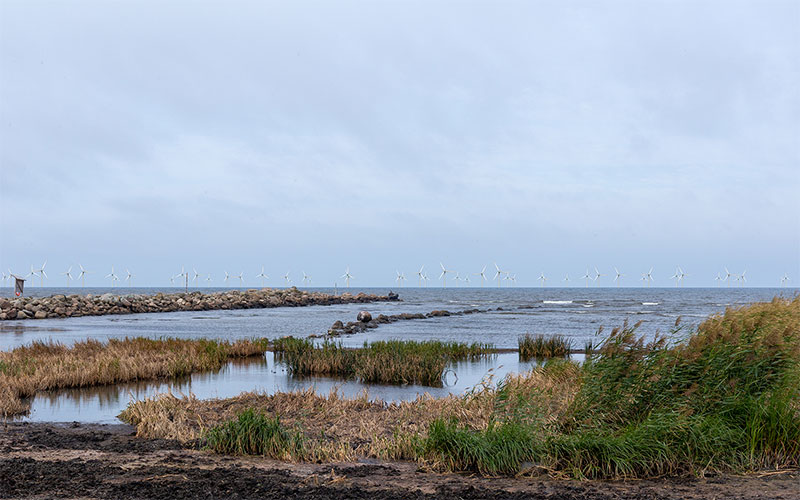The principles for planning the electrical connections of the Liivi offshore wind farm were established

View that would open to the Gulf of Riga Offshore Wind Farm being developed by Enefit Green from Port Jaagup in Pärnumaa.
The initial positions of the national designated spatial plan regarding the electricity connections of the Gulf of Riga Offshore Wind Farm and the programme for assessing the impacts accompanying its implementation have been prepared. The prepared document establishes a methodological basis for planning and further comparing alternative route corridors, conducting strategic impact assessment and thereby selecting the final location.
‘We have successfully maintained the planned pace and can bring the preparatory stage of the designated spatial plan to a conclusion, allowing us to move forward in selecting the location more specifically,’ said Anne Martin , coordinator of the national designated spatial plan at the Ministry of Regional Affairs and Agriculture. ‘Public consultations have highlighted both people’s wishes and their concerns regarding the route choices. For example, locals expect that underground cables will be used. On the flip side, there is uncertainty about whether the adverse effects of the plan on local residents will be adequately compensated. The people of Kihnu raised concerns about the island’s security of supply,’ Anne Martin noted. ‘We have analysed the feedback from public consultations and, on this basis, supplemented and refined the planning document.’
The Development Manager of Offshore Wind Power at Enefit Green Karmo Kõrvek commented the following: ‘Even though the year 2030 when the offshore wind farm could be completed may seem distant, it is important for us to finish assessing the impacts of electricity connection routes, find mitigation measures for significant environmental impacts and achieve clarity regarding the most suitable route corridor in co-operation with the community. While it is understandable that locals have their concerns, a clear and transparent methodology should ensure that we arrive at a solution that is comprehensively considered.’
The initial positions of the prepared national designated spatial plan and the strategic assessment programme serve as guidelines for the subsequent preparation of the plan as well as the assessment of the impacts associated with its implementation. The document provides an overview of the general principles to be followed in both the planning process and the implementation of the plan. In addition, it includes the key tasks to be addressed, the surveys to be conducted during the location selection stage and outlines the expected significant and relevant impacts that may accompany the establishment of electricity connections.
The materials can be found here: www.liivielekter.ee
Additional information:
Anne Martin Spatial Planning Adviser at the Ministry of Regional Affairs and Agriculture +372 5802 3933
Karmo Kõrvek Development Manager of Offshore Wind Power at Enefit Green +372 5342 3015